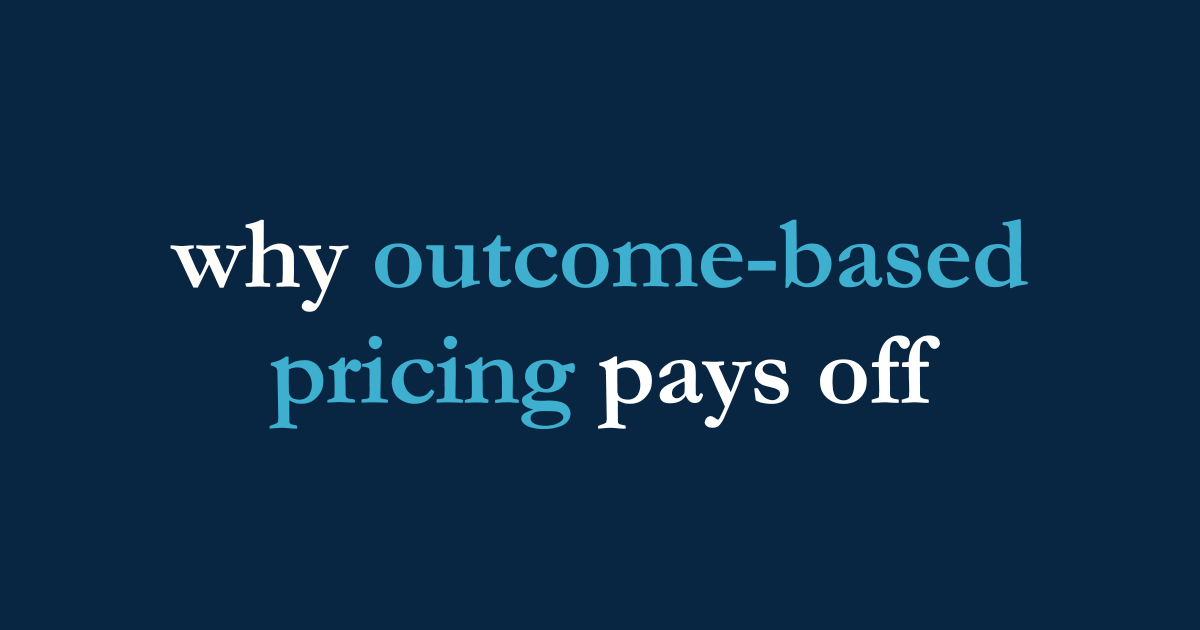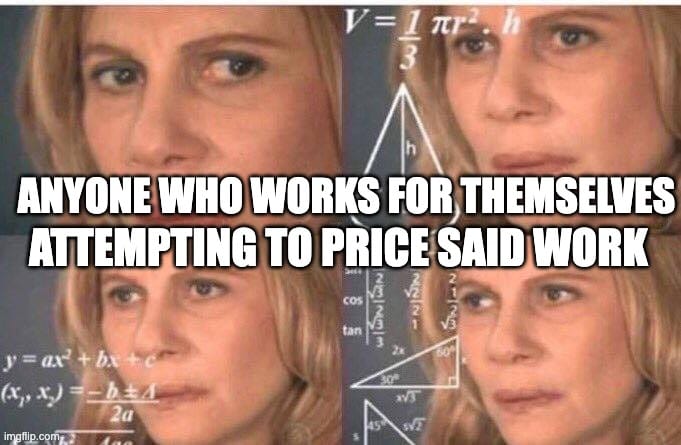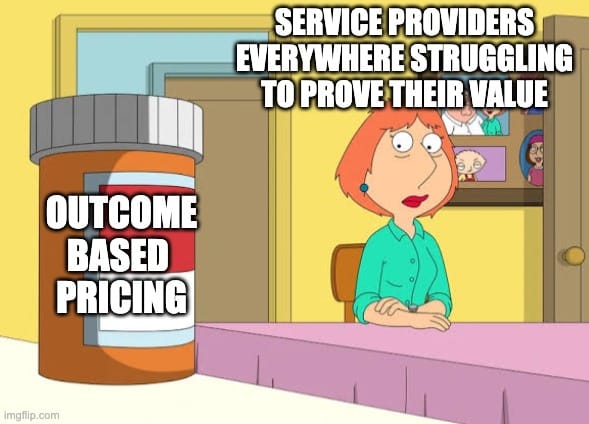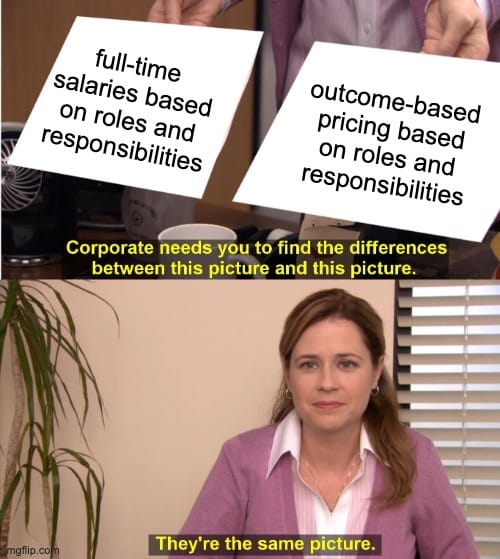- the minority misfit
- Posts
- 💸 this pricing strategy pays off
💸 this pricing strategy pays off
yet *another* argument for outcome-based pricing

table of funtents
As a reminder, I started building keshty in public because:
- Most of us don’t come from a long line of entrepreneurs (me included)
- I wanted to equip minority misfits with tools to scale their own impact
- HENCE, I needed to live transparently (no BS) through my own journey
👋🏼 it’s me, hi
HAPPY WEDNESDAY, MISFITS ✌🏼
Internally screaming because we’ve got a number of new faces here at the minority misfit. A MEGA welcome to the newbies and welcome back to the veterans!

What to expect:
My totally candid, no bullshit lessons building keshty in public (bonus: memes)
New episodes drop every other Wednesday at 5 PM GMT / 9 AM PST
100% written by this gal right here, always
Aaand who exactly is this gal?
Hiii! I’m Neda - an IO Psychologist and ops leader turned Fractional COO and Scale Advisor
The first in my circle to start a venture like this and truly figuring it out as I go
Writing this newsletter to laugh, learn and vibe through the novelties - with the hope that my lessons will help you get it right even faster
While you may be a first-time biz owner, a full-timer considering the move to fractional or just someone who appreciates a well-curated meme, I hope you find value here at the minority misfit 🥰
ICYMI: our last episode was about the hard to swallow pills we need to successfully run this sort of biz; doctor’s orders hey - don’t @ me.
💸 why outcome-based pricing pays off
Misfits, this isn’t our first rodeo on pricing:
We’ve scraped the surface before in this past episode, where I outlined the difference between common strategies including time, retainer and value (or outcome) based pricing.
IMO, it’s not enough to talk pricing once and be done with it. With its complicated and ever-iterative nature, it’s a topic that demands and deserves several conversations.

truly the hardest part of all this IMO
picture this:
You’ve discussed ways of working. You’ve scoped priorities. You’ve signed terms.
You hit your client with: “I charge £800 per day for my services.” Convo over. Everyone’s a winner.
Until you get hit back with: “so, what do you actually do in that day?”
Your client asks this time and time again, and it annoys you so much that you start working just as transactionally.
Don’t get me wrong, friends: I know having a fixed day or hourly rate is both easy to communicate to clients and easy on your own brain.
But the problem lies in their expectation of how long they think things should take you (based off little experience and context) vs. how long it actually will (based on your mega experience).
So instead of spending your time doing the actual work, you’re auditing and discussing how you’re spending the time with your client. Bad vibes.
That’s where outcome-based pricing comes in.
Today, I’ll share pros, cons and examples that’ll bring outcome-based pricing - and crucially, my major advocacy of this strategy - to life for you and your biz.
💡 But first, what is outcome-based pricing?
When the cost of your service directly links to an agreed result for the client. In order for it to work, your outcome needs to be defined, specific and measurable.
Example: think “I’ll produce your org design post-seed round and hire your full-time ops leader” vs. something like “I can support a culture change.”
Read more about outcome-based pricing in detail here.
✅ pros
1. promote progress and value

not to mention the ick that comes with proving your value
With outcome-based pricing, the client pays you for the value you deliver - no matter how long (or little, even!) the work takes you. The conversation steers to how you’ll minimise fear and pain with the specific value you’ll bring.
1️⃣ In theory: think - the cost of them getting it wrong, attempting this without your expertise and playbook and their stress / sleepless nights. I reckon they’ll pay good money to keep those at a minimum.
2️⃣ In practice: agree 2-3 core priorities and how many weeks / months it’ll take you to deliver them. Some weeks you work more, some you work less - but either way, every discussion centres on progress to outcomes.
3️⃣ In my experience: as long as clients see progress, they tend to be more generous with their trust / autonomy, and less concerned about the “how” / time spent.
2. stay agile without working more

clock strikes 5 PM - cya, hun x
As most of my clients are in tech, one major issue I’ve found with time-bound rates is their inability to flow with the agility tech demands.
Where corporate moves slowly and requires layers of approval for basic things to go ahead, tech - particularly earlier stage - changes and moves at pace.
1️⃣ In theory: if you’re focused on time spent in role vs. outcomes, this arrangement leaves both you and the client feeling a real lack of accomplishment. Time becomes a blocker instead of an enabler - and your clients feel it too.
2️⃣ In practice: imagine you’ve spent a month hiring a candidate who goes AWOL after their start date. Would you feel good turning around to the client with “oooh, you’re actually out of time this month. Buy another 3 days and I’ll fix this for ya?” I know I wouldn’t.
3️⃣ In my experience: while there’s an argument that time-bound rates help you protect your time, I’ve found the opposite - clients push for more of your time because they feel a piece of work wasn’t achieved, guilting you into doing it for free.
With outcome-based pricing, we go until the goal is achieved. By staying flexible and fluid to the natural pace of the startups I work with - e.g. spending 1-2 hours a day and staying agile vs. working a “set day" - the outcome has always come faster whilst maintaining quality.
3. model full-time roles IRL

so, it’s not really that deep?
If we boil it down to what we know best, professional full-time roles are performance-based. This means outcome-based pricing isn’t that farfetched - if anything, it most closely resembles working any normal salaried position.
1️⃣ In theory: while some organisations get us to “clock in and out,” we still have a set of roles and responsibilities we’re expected to deliver on. Failure to do so results in performance management and even dismissal.
2️⃣ In practice: with outcome-based pricing, you’re recognised and rewarded for the value you bring / goals you accomplish for the business - not just for showing up and doing a days’ work.
3️⃣ In my experience: many clients have either come from or been exposed to consulting - meaning they actually get this setup. Unless you’re a lawyer charging for billable hours, rest assured most people will have come across a consulting-based pricing model in their career (akin to a project fee). If they haven’t, this is your opportunity to help them understand and buy into your value.
❌ cons
All light comes with a dark side, and I won’t BS ya: outcome-based pricing requires patience, skill and getting it wrong ~472 times before it starts making sense (it did for me, anyway).
I’ll outline the cons below with the disclaimer:
Despite outcome-based pricing being a lil’ complicated, I’ve taken home more moolah (and felt infinitely more accomplished in my work) by investing the time to nail this approach.
Because good things don’t come easy and all that jazz.
1. hard to work out

outcome-based pricing the first 471 times
At the start, pricing a project took me more time and mental energy than probably anything else.
Nearly two years on, it’s still a mental juggle - but it does get easier.
1️⃣ In theory: you deliver an outcome + it has value = therefore, price.
2️⃣ In practice: how exactly does one price an outcome, especially if it isn’t directly revenue-generating? Operations, for example, enables the rest of the business to perform their best - ergo, generating more revenue. So how do you value all the background work it takes to get there? How do you price buzzwords like operational efficiency and reduced SLAs?
3️⃣ In my experience: I’ve found it easier to price against costs - again, speaking directly to fears and pains.
Let’s go back to the specific org design and hiring example: what’s the cost of designing an org wrong - hiring and firing people who aren’t the right level for what the client needs? What’s the cost of interviewing the wrong kind of people for months? What’s the cost of failing to set a hire up to succeed once they’re in role?
I then price the value of them getting it right the first time.
2. justifying demands influence

me any day I’m not drafting a proposal 💍
Outcome-based pricing is challenging to nail - particularly for folk used to fixed rates who ask how you came to the fee you’re proposing.
1️⃣ In theory: you give a high fee, clients are thrilled and immediately run to pay you.
2️⃣ In practice: nothing gets someone’s back up like being asked for money, so you need to be prepared to defend your numbers. This is your opportunity to take control of the conversation and back yourself (without getting defensive, obvs).
3️⃣ In my experience: once again, I always, always speak to the client’s fear and pain. I scope every conversation around “what’s keeping you up at night” and “what’s the cost of getting this wrong?” I don’t throw fees out of thin air - I’m prepared to speak to them. Fundamentally, they have to make sense to you. Don’t pitch something that doesn’t.
3. you gotta be a scope-creep master

ngl I lol’d making this one
In order for outcome-based pricing to be truly effective, you need to safeguard the scope and priorities you agreed upon. Otherwise - before you know it - you’ll slip right back into time-bound pricing.
1️⃣ In theory: you agreed priorities with the client and you’ll only deliver on these.
2️⃣ In practice: the unexpected comes up, the client trusts you and you’re already in the business anyway. Can you just do this because it’ll only take a minute? And hop on that one call? And I know we didn’t discuss it initially, but this other little thing?
3️⃣ In my experience: Safeguarding scope creep doesn’t make you inflexible - it’s the right thing to do. Your client is PAYING you to deliver a specific outcome - anything that takes you away from that is money effectively going to waste. If you cater to every whim and fail to deliver the core promise, they’ll ultimately feel hard done by.
It’s on you to collaboratively reassess priorities as they come about, manage their expectations and be the master of scope creep.
💩 no bs reminders
⏳ time-bound pricing isn’t totally taboo
I use time-bound pricing for my advisory offer: £2.5k a month gets clients 6 hours with my brain on the topic of their choosing. While we’ll outline core priorities they’d like to achieve, all the work and effort is on them to execute - thus making it entirely an exchange of my time.
For some arrangements, time-bound is totally okay. But for those where you’re delivering the outcome, I’d lean back on outcome-based pricing as your best bet.
📉 reduced price = reduced scope
If cost is a real blocker for the client but you still want to work with them at a reduced price, always remember to negotiate scope down with it. Full price gets them full outcomes met. Reduced price gets reduced outcomes.
Don’t feel bad about this - you supporting with something is still heaps better than nothing for them.
🚫 remember: you can say no too
Recall from Episode If It’s Not a F* Yes, It’s a No that saying no to opportunities is a finessed, disciplined art. If people can’t pay you or don’t see the value, you don’t have to work with them. We’re not obligated to engage with everyone who takes an initial interest in us - a professional relationship is a two-way street.
With that said, if you’re finding yourself pitching to a lot of people who can’t pay you or see the value, ask yourself: are you simply chasing cash? If so, challenge yourself to only engage with highly-relevant conversations with your ICP. The volume may be less, but the chance of successfully converting will be infinitely higher.
And that’s a wrap on today’s episode, misfits 🫶🏼
Have you dabbled in outcome-based pricing, and if so, what do you think? As always, I’m only a message away for thoughts, questions and topic ideas. I read and sincerely appreciate every single poll / email response! Please keep them coming.
Before you go, could you let a girl know what you thought of this issue with the pulse check below? Good intent feedback is always welcome ⬇️
xo, Neds
vibe check on the minority misfit:how did you find today's newsletter? |